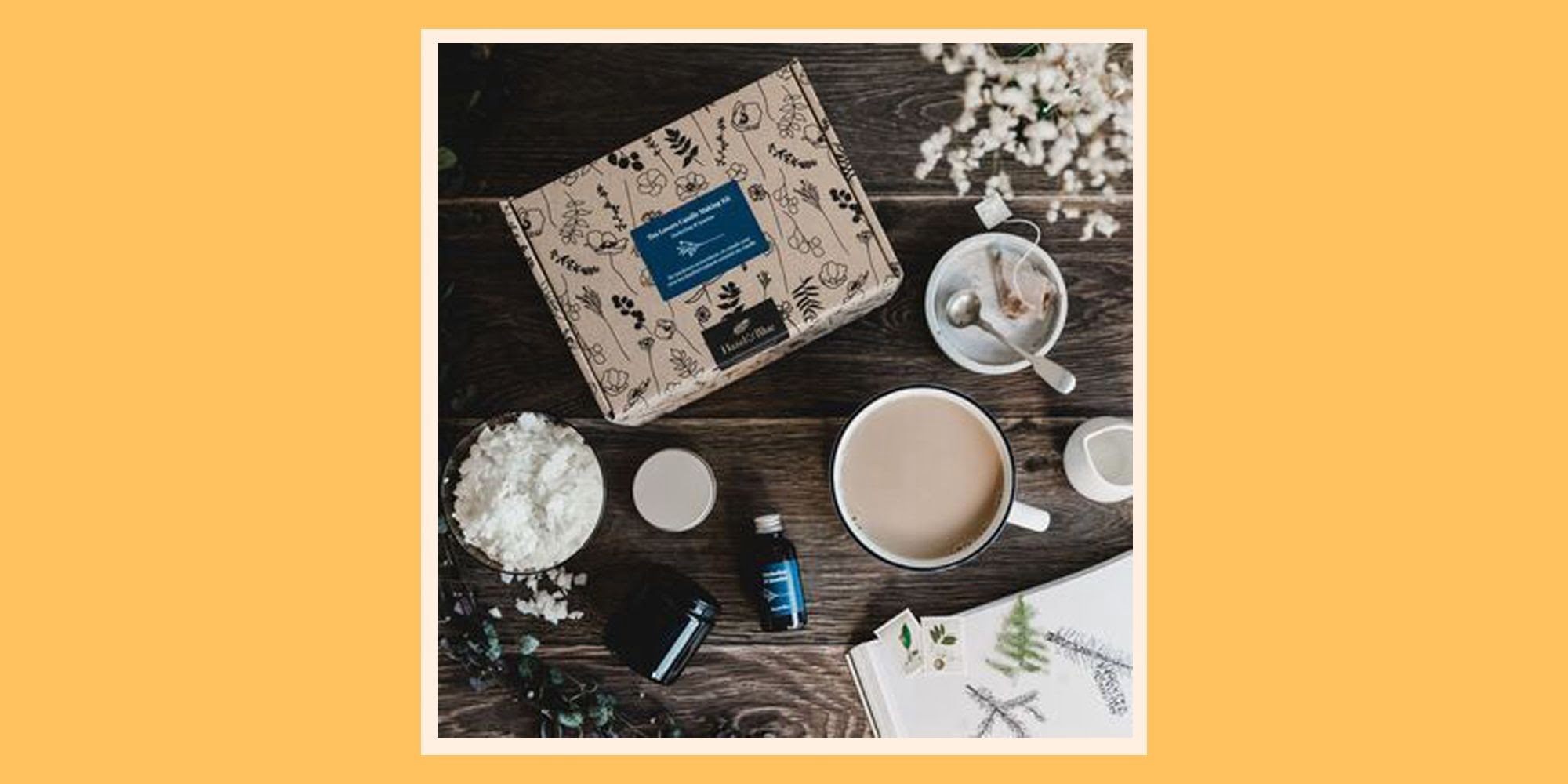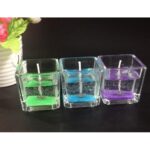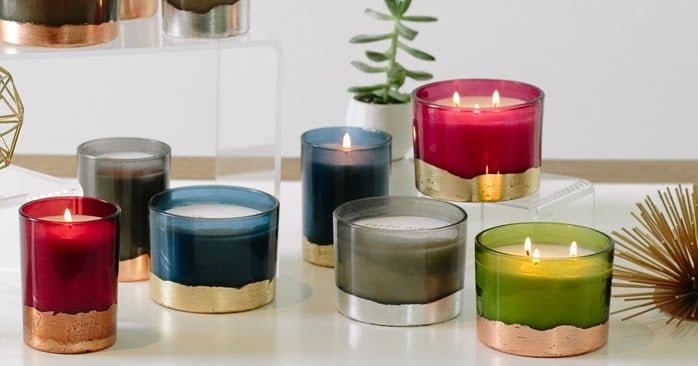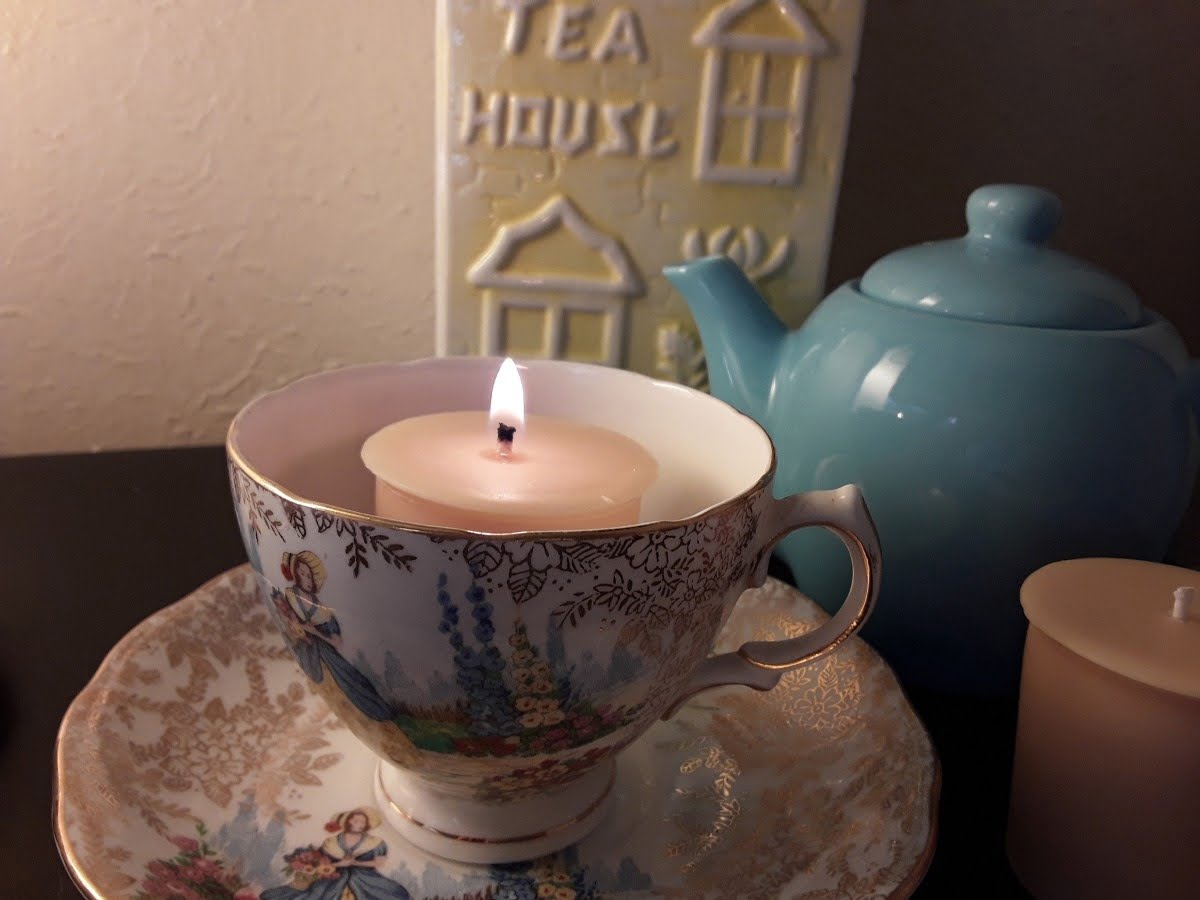Are you interested in exploring the art of candle making? Whether you’re a beginner or looking to expand your crafting skills, simple candle making can be a rewarding and enjoyable hobby. In this article, we will guide you through the basics of creating your own homemade candles, from understanding the supplies and tools needed to troubleshooting common issues.
Candle making is a versatile craft that allows for endless creativity and personalization. By choosing the right wax, adding unique scents, and incorporating vibrant colors, you can create beautiful candles that reflect your own style and preferences. With the right guidance and techniques, anyone can master the art of candle making.
In the following sections, we will walk you through each step of the candle making process, providing helpful tips and instructions along the way. From selecting the perfect wax to ensuring your candles burn perfectly with the right wick selection, you will learn everything you need to know to create stunning homemade candles. So let’s dive in and discover the wonderful world of candle making.
The Basics of Candle Making
When it comes to simple candle making, it’s important to have a good understanding of the basic supplies and tools needed to create your own homemade candles. The process of candle making requires just a few key items, and with the right materials at your disposal, you can start creating beautiful and unique candles in no time.
One of the essential supplies you will need is wax, which is the main ingredient in any candle. There are several types of wax to choose from, each with its own unique qualities and properties. Some popular options include soy wax, beeswax, paraffin wax, and gel wax. Each type of wax has its own melting temperature and fragrance retention, so it’s important to choose the right one for your specific candle making needs.
In addition to wax, you will also need wicks, which are essential for creating a proper burning candle. The size and type of wick you choose will depend on the diameter of your candle and the type of wax you are using.
It’s important to select a wick that is appropriate for the size and composition of your candle to ensure that it burns properly. Other supplies and tools that are commonly used in candle making include a double boiler or melting pot for melting the wax, a thermometer for monitoring the temperature, fragrance oils or essential oils for scenting the candles, color dyes or pigments for adding color, as well as containers or molds for shaping the candles.
| Supplies/Tools | Description |
|---|---|
| Wax (Soy, Beeswax, Paraffin) | Main ingredient in any candle |
| Wicks | Essential for creating a proper burning candle |
| Melting pot/Double boiler | For melting the wax |
Understanding these basic supplies and tools needed for simple candle making is crucial before embarking on this craft. By gathering all necessary materials beforehand and familiarizing yourself with their uses, you can set yourself up for success when starting your journey into homemade candle creation.
Choosing the Right Wax
When it comes to simple candle making, one of the most crucial decisions you’ll make is choosing the right wax for your homemade candles. The type of wax you use will greatly impact the quality, scent throw, and appearance of your finished product. There are several different types of candle waxes to choose from, each with its own unique characteristics and benefits.
One popular option for beginners is soy wax, which is derived from soybean oil. Soy wax is known for its clean-burning properties and ability to hold a high concentration of fragrance. It also has a smooth and creamy appearance, making it perfect for container candles.
Another common choice is paraffin wax, which has been used in candle making for centuries. Paraffin wax is known for its excellent scent throw and ability to hold vibrant colors. However, some individuals may prefer natural alternatives to paraffin due to its petroleum-based origins.
For those looking for an eco-friendly option, there’s also beeswax. Beeswax is a natural byproduct of honey production and has a sweet, honey-like aroma when burned. It’s known for its long burn time and beautiful golden hue, but it can be more challenging to work with than other waxes.
In addition to these options, there are also specialty waxes such as palm wax and coconut wax that offer their own unique qualities. Ultimately, the right choice will depend on your personal preferences and the specific requirements of your candle making project.
| Candle Wax Type | Main Characteristics |
|---|---|
| Soy Wax | Clean-burning; holds fragrance well; ideal for container candles |
| Paraffin Wax | Excellent scent throw; good color retention; petroleum-based origin |
| Beeswax | Natural; sweet aroma; long burn time; golden hue; can be challenging to work with |
| Palm Wax/Coconut Wax | Specialty options with unique qualities such as crystalline finish or clean burn respectively. |
By understanding the characteristics of different types of candle waxes, you can make an informed decision that will help you achieve the desired results in your simple candle making endeavors. Whether you prioritize eco-friendliness, strong fragrance throw, or vibrant colors, there’s a perfect wax out there for every candle maker. Choose wisely based on your priorities and enjoy experimenting with different types as you hone your craft.
Adding Scent
Choosing the Right Fragrance Oils
When it comes to adding scent to your homemade candles, it’s important to choose the right fragrance oils that will complement the overall experience. There are a wide variety of fragrance oils available, from floral and fruity scents to more earthy and exotic ones.
Consider the purpose of your candle – will it be used for relaxation, meditation, or simply for ambiance? Choosing a fragrance oil that aligns with the intended purpose of your candle will enhance the overall experience for the user.
Measuring and Incorporating Fragrance Oils
Once you have chosen the desired fragrance oil for your candles, it’s important to measure and incorporate it into your wax properly. For beginners, a general rule of thumb is to add 1 ounce of fragrance oil per 1 pound of wax.
However, it’s always best to refer to the specific instructions provided by the manufacturer of your chosen fragrance oil. When incorporating the fragrance oil into your melted wax, make sure to do so at the recommended temperature specified for that particular oil, as this can affect its potency in the final product.
Avoiding Common Mistakes
When adding scent to your homemade candles, there are some common mistakes that can affect the final result. One such mistake is adding too much fragrance oil, which can lead to issues such as poor burn quality and an overwhelming scent when burned.
Another common mistake is not allowing enough time for the fragrance oil to bind with the wax before pouring it into the mold, which can result in an uneven distribution of scent throughout the candle. By paying attention to these simple tips and tricks, you can ensure that your homemade candles are beautifully scented and ready to be enjoyed.
Adding Color
When it comes to simple candle making, adding color can take your homemade candles to the next level. Not only does colored wax add visual appeal to your candles, but it also allows you to customize your creations to fit any aesthetic or occasion. Whether you prefer soft pastel shades, bold and vibrant hues, or natural earthy tones, there are a few tips and techniques that can help you achieve the perfect color for your candles.
One of the simplest ways to add color to your candles is by using dye chips or blocks specifically designed for candle making. These dyes come in a wide range of colors and are easy to use – simply add them to the melted wax and stir until the desired hue is achieved.
Keep in mind that different types of wax may require different amounts of dye to achieve the same level of color saturation, so it’s important to follow the manufacturer’s instructions for best results.
For those who prefer a more natural approach, consider using botanical extracts or powdered herbs to add color and texture to your candles. For example, dried lavender buds can give your candles a soft purple hue, while ground cinnamon can create warm, earthy tones. Experimenting with natural colorants not only adds unique visual appeal to your candles but also allows you to infuse them with delightful scents.
Another option for adding color to your homemade candles is by layering different colored waxes. This technique allows you to create beautiful ombré effects or multi-colored designs that are sure to impress. Simply pour one layer of melted wax into the container, allow it to cool and solidify slightly, then gently pour the next layer on top.
Repeat this process until all desired layers are added, creating stunning visual interest in your finished candle. With these simple tips for adding color, you can take your candle-making hobby from basic white pillars to vibrant works of art that reflect your personal style and creativity.
The Art of Wick Selection
When it comes to simple candle making, one of the most crucial aspects to consider is wick selection. The right wick can make all the difference in how your candles burn, ensuring a clean and even burn from start to finish. There are several factors to take into account when choosing the perfect wick for your homemade candles.
To begin, you’ll need to consider the type of wax you’re using for your candles. Different waxes require different wick sizes in order to achieve optimal burning results. For example, soy wax typically requires a larger wick size compared to paraffin wax. Be sure to consult a wick size chart or ask your supplier for recommendations based on the specific wax you plan to use.
Another important factor in wick selection is the diameter of the container or mold that will hold your candle. The size of the container will determine how much heat is needed to effectively melt and release the fragrance from your candle. Use this information as a guide when selecting a wick, keeping in mind that larger containers may require multiple wicks for an even burn.
Finally, take into consideration any added fragrance or colorants in your candle. Scented and colored candles may require more robust wicks to accommodate for the additional elements in order to ensure an even burn throughout the entire lifespan of the candle.
Here are some simple guidelines for selecting the right wick:
- Consider the type of wax you’ll be using
- Take into account the diameter of your container or mold
- Adjust for any added fragrance or colorants
By carefully considering these factors and following these guidelines, you can ensure that your candles burn perfectly every time, adding both beauty and atmosphere to any room in which they’re placed.
Simple Candle Making Techniques
So, you’re ready to try your hand at making your own candles? With the right supplies and a little bit of guidance, you can create beautiful, customized candles right in the comfort of your own home. Here are some simple candle making techniques to help get you started on your new hobby:
Choosing Your Supplies
When it comes to making your own candles, there are a few basic supplies that you will need to get started. These include wax (such as soy wax or beeswax), fragrance oils or essential oils for scent, candle dye for color, wicks, a double boiler or melting pot, a thermometer, and containers or molds for shaping the candles. You can find these supplies at craft stores or online retailers.
Melting the Wax
The first step in creating your own candles is to melt the wax. This can be done using a double boiler or a melting pot specifically designed for candle making. Place the wax into the top of the double boiler or melting pot and heat it until it reaches the recommended temperature according to the type of wax you are using. Be sure to use a thermometer to monitor the temperature and avoid overheating.
Adding Scent and Color
Once your wax has melted to the proper temperature, you can add fragrance oils and candle dye to customize your candles. Use a few drops of fragrance oil for every cup of melted wax, and adjust according to your personal preference. For adding color, simply add a small amount of candle dye and stir until it is evenly distributed throughout the wax.
With these simple candle making techniques, beginners can start creating their own beautiful candles with ease. Whether you want to make scented soy candles for relaxation or colorful beeswax candles for decoration, this step-by-step guide will help you get started on your new creative hobby. Enjoy experimenting with different scents and colors as you explore the art of homemade candle making.
Troubleshooting Common Issues
When it comes to simple candle making, beginners may encounter some common issues that can hinder the quality of their homemade candles. Understanding how to troubleshoot these problems is essential for perfecting your craft and creating beautiful, long-lasting candles. In this section, we will explore some of the most common issues that arise during the candle making process and provide tips on how to fix them.
Uneven or Tunnelling Candles
One of the most common issues when making candles is ending up with an uneven burn or tunnelling, where the wax burns down the center, leaving a tunnel around the wick. This can be caused by using the wrong size or type of wick for your chosen wax, as well as not allowing your candle to burn for long enough during its initial use.
To fix this issue, it’s essential to ensure you are using the correct wick size and type for your chosen wax, as well as allowing your candle to burn long enough during each use to create an even melt pool.
Sinking or Cracking
Another common issue in simple candle making is sinking or cracking in the center of the candle once it has cooled. This can occur if your wax has cooled too quickly or if there was air trapped within the candle while it was setting.
To prevent this issue, make sure to use a quality wax with a lower melting point and pour your candles at an appropriate temperature. Additionally, tapping or gently stirring your candles after pouring can help release any trapped air bubbles and prevent sinking or cracking.
Inconsistent Color or Scent
Inconsistent color or scent distribution can also be a common problem in homemade candles. This issue is often caused by improper mixing of fragrance oils or dyes into the wax. To fix this problem, ensure that you thoroughly mix your fragrance oils and dyes into your melted wax before pouring. It’s also important to follow recommended usage rates for fragrance oils and dyes to achieve consistent results in both color and scent.
By addressing these common issues and implementing effective solutions, beginner candle makers can improve their skills and produce high-quality homemade candles with confidence. Remember that practice makes perfect when it comes to simple candle making – don’t be discouraged by mistakes, but rather embrace them as learning opportunities on your creative journey towards mastering this craft.
Conclusion
In conclusion, simple candle making is a wonderful and rewarding hobby that anyone can enjoy. With the right supplies, tools, and knowledge, you can create your own beautiful and fragrant candles to enjoy or gift to others. Whether you prefer scented or unscented candles, vibrant colors or classic white, there are endless possibilities for customization when it comes to homemade candles.
By understanding the basics of candle making, such as choosing the right wax, adding scent and color, and selecting the perfect wick, you can ensure that your candles burn perfectly every time. And with step-by-step instructions for beginners and troubleshooting tips for common issues, you can feel confident in your candle making abilities.
Embracing the joy of creating your own candles allows you to express your creativity and personalize your living space with handmade decor. The satisfaction of lighting a candle that you made yourself is truly unmatched. So why not give simple candle making a try? You may just discover a new passion and talent in the process.
Frequently Asked Questions
How Do You Make a Candle for Beginners?
Making a candle for beginners requires a few key steps. First, gather all necessary materials such as wax, wicks, a double boiler, and fragrance oils. Melt the wax, add the fragrance oil, pour the wax into a container with the wick centered, and allow it to cool.
What Is the Easiest Wax for Beginner Candle Making?
The easiest wax for beginner candle making is often soy wax. This type of wax is widely available, easy to work with, and has a lower melting point than other waxes. Soy wax also has a clean burn and good scent throw when used in candles.
How to Make Your Own Cheap Candles?
To make your own cheap candles, consider using materials that are readily available and affordable such as soy or paraffin wax, cotton wicks, and recycled containers or jars for the candle vessel. Be resourceful and creative in sourcing supplies to keep costs low while making your own candles.

Welcome to my candle making blog! In this blog, I will be sharing my tips and tricks for making candles. I will also be sharing some of my favorite recipes.





